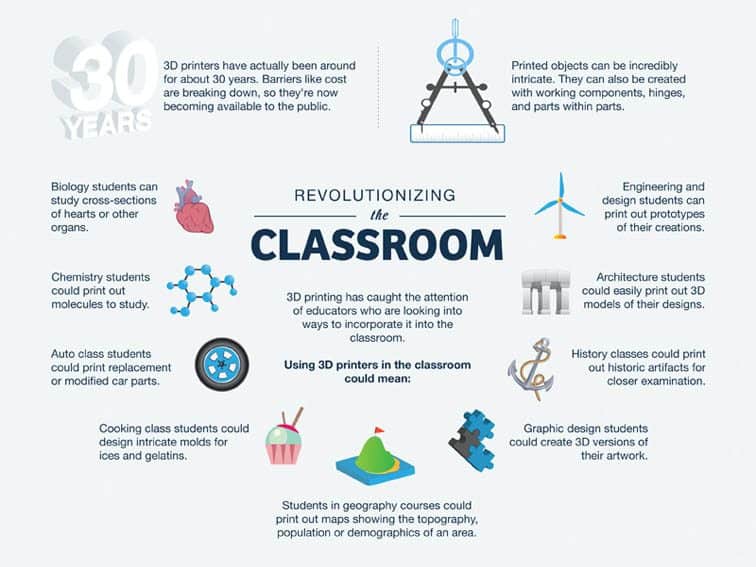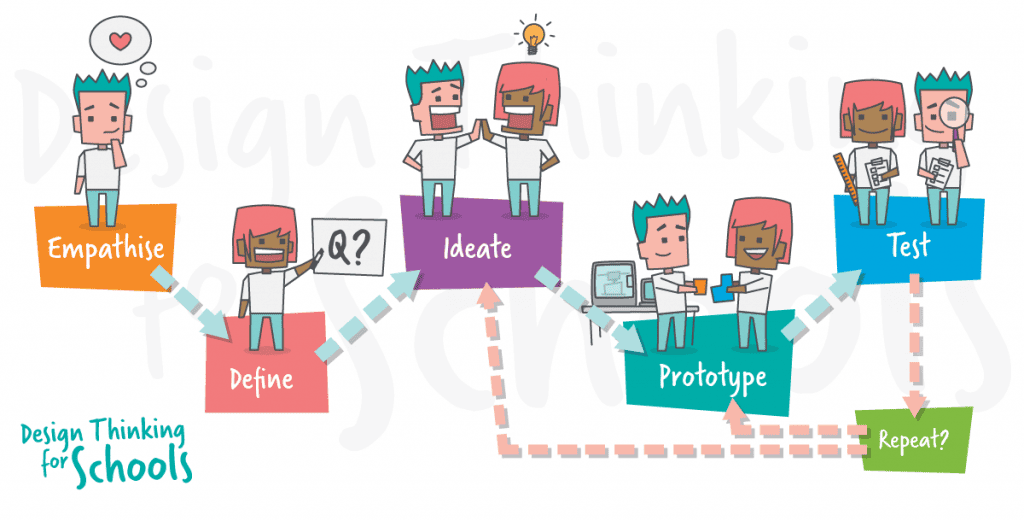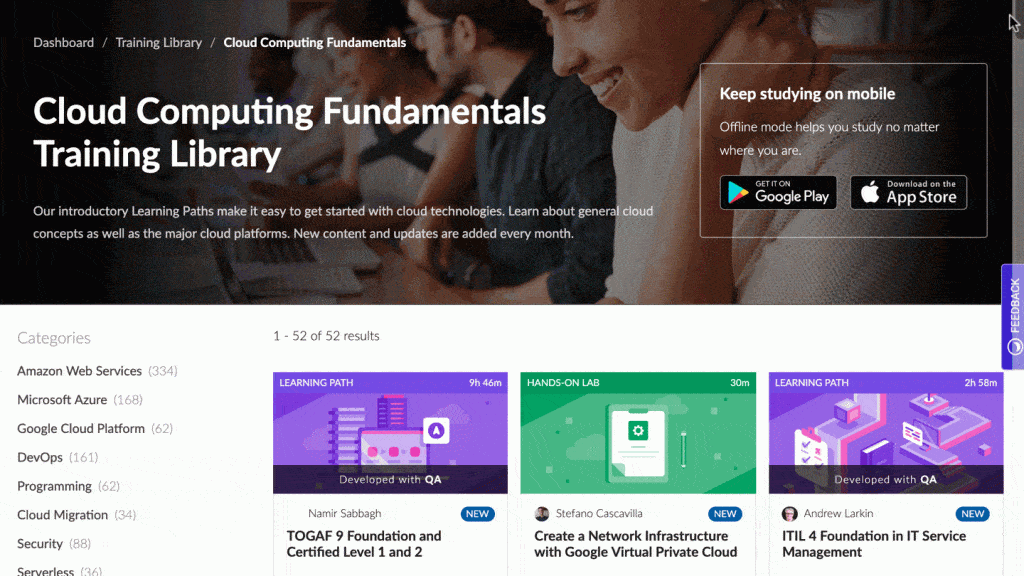Imagine staying in a boring class with the voice of the teach' echoing in your ears, trying to lift your eyelids to pay attention to what they are saying. Not the best scenario for any class, right? How about trying something different, such as these innovative teaching methods below?
Table of Contents
- What are Innovative Teaching Methods?
- Why Teachers Need to be Innovative
- 15 Innovative Teaching Methods
- 1. Interactive lessons
- 2. Using virtual reality technology
- 3. Using AI in education
- 4. Blended learning
- 5. 3D Printing
- 6. Use the design-thinking process
- 7. Project-based learning
- 8. Inquiry-based learning
- 9. Jigsaw
- 10. Cloud computing teaching
- 11. Flipped classroom
- 12. Peer Teaching
- 13. Peer Feedback
- 14. Crossover teaching
- 15. Personalised learning
- 1. Interactive lessons
More Classroom Tips

Start in seconds.
Get free education templates for your ultimate innovative teaching methods!. Sign up for free and take what you want from the template library!
🚀 Sign Up For Free☁️
What are Innovative Teaching Methods?
Innovative teaching methods aren't just about using the most cutting-edge technology in class or constantly catching up with the latest education trends.
They're all about using new teaching strategies that focus more on students. These innovative ones encourage students to join proactively and interact with their classmates and you - the teacher - during lessons. Students will have to work more, but in a way that meets their needs better and can help them grow faster.
Unlike traditional teaching, which mainly focuses on how much knowledge you can pass on to your students, innovative ways of teaching dig deep into what students truly take away from what you're teaching during lectures.
Why Teachers Need to be Innovative
The world has seen a shift from brick-and-mortar classrooms to online ones and hybrid learning. However, staring at laptop screens means it's easier for students to be lost and do something else (maybe chasing sweet dreams in their beds) while honing nothing but their skills in pretending to concentrate.
We can't blame it all on those students for not studying hard; it's also the teacher's responsibility not to give dull and dry lessons that make students fed up.
Many schools, teachers and trainers have been trying innovative teaching strategies in the new normal to keep students interested and engaged more. And digital programs have helped them reach out to students' minds and give students better access to classes.
Still sceptical?... Well, check these stats out...
In 2021:
- 57% of all US students had their digital tools.
- 75% of US schools had the plan to go virtual entirely.
- Education platforms account for 40% of student device usage.
- The use of remote management apps for educational purposes increased by 87%.
- There is an increase of 141% in the use of collaboration apps.
- 80% of schools and universities in the US had bought or tended to buy additional technology tools for students.
By the end of 2020:
- 98% of universities had their classes taught online.
Source: Think Impact
These stats show a massive change in the way people teach and learn. Best heed them - you don't want to be an old hat and fall behind with your teaching methods, right?
So, it's time to re-evaluate learning methods in education!
7 Benefits of Innovative Teaching Methods
Here are 7 of what these innovations can do good for students and why they're worth a try.
- Encourage research - Innovative approaches to learning encourage students to explore and discover new things and tools to broaden their minds.
- Improve problem-solving and critical thinking skills - Creative teaching methods allow students to learn at their own pace and challenge them to brainstorm new ways to address a problem instead of finding answers already written in textbooks.
- Avoid receiving a lot of knowledge at once - Teachers using new approaches still give students information, but they tend to split it into smaller parts. Digesting info can now be more accessible, and keeping things short helps students get the basics faster.
- Adopt more soft skills - Students have to use more complex tools in class to finish their work, which helps them learn new things and spark their creativity. Also, when doing individual or group projects, students know how to manage their time, prioritise tasks, communicate, work with others better, and much more.
- Check students' understanding - Grades and exams can say something, but not everything about a student's learning capacity and knowledge (especially if there are sneaky peeks during tests!). Using a classroom technology, teachers can gather data on student progress and quickly identify where students struggle. This makes it easier to adjust teaching methods based on individual needs.
- Improve self-evaluation - With great methods from teachers, students can understand what they've learned and what they're missing. By discovering what they still need to know, they can understand why to learn particular things and become more eager to do it.
- Enliven classrooms - Don't let your classrooms be full of your voice or awkward silence. Innovative teaching methods give students something different to get excited about, encouraging them to speak up and interact more.
15 Innovative Teaching Methods
1. Interactive lessons
Students are your innovative learners! One-way lessons are very traditional and sometimes exhausting for you and your students, so create an environment where students feel encouraged to speak up and express their ideas.
Students can join in-class activities in many ways, not just by raising their hands or being called out to answer. These days, you can find online platforms that help you make interactive classroom activities to save heaps of time and get all students to join instead of just two or three.
🌟 Interactive lesson examples
Interactive lessons can improve your students' retention and attention span. Get all your class pumped up by playing live quizzes and games with spinner wheels or even through word clouds, live Q&A, polls or brainstorming together. You can have all your students participate in those exciting activities with the help of some online platforms.
Not only that, but students can type or choose answers anonymously instead of raising their hands. This makes them more confident to get involved, express their opinions and no longer worry about being 'wrong' or judged.
Looking to try interaction? AhaSlides has all these features in store for you and your students!

2. Using virtual reality technology
Enter a whole new world right inside your classroom with virtual reality technology. Like sitting in a 3D cinema or playing VR games, your students can immerse themselves in different spaces and interact with 'real' objects instead of seeing things on flat screens.
Now your class can travel to another country in seconds, go outer space to explore our Milky Way, or learn about the Jurassic era with dinosaurs standing just meters away.
VR technology may be costly, but the way it can turn any of your lessons into a blast and wow all students makes it worth the price.
🌟 Teaching with Virtual Reality Technology
It looks fun, but how do teachers teach with VR technology for real? Watch this video of a VR session by Tablet Academy.
3. Using AI in education
AI assists us in doing so much of our work, so who says we can't use it in education? This method is surprisingly widespread these days.
Using AI doesn't mean it does everything and replaces you. It's not like in the sci-fi movies where computers and robots move around and teach our students (or brainwash them).
It helps lecturers like you reduce their workload, personalise courses and instruct students more efficiently. You probably probably use many familiar things, such as LMS, plagiarism detection, automatic scoring and assessment, all AI products.
So far, AI has proved it brings about many benefits for teachers, and the scenarios of it invading the education field or Earth are the stuff of movies only.
🌟 Using AI in education example
- Course management
- Assessment
- Adaptive learning
- Parent-Teacher communication
- Audio/visual aids
Read over 40 more examples here.
4. Blended learning
Blended learning is a method that combines both traditional in-class training and high-tech online teaching. It gives you and your students more flexibility to create effective studying environments and customise learning experiences.
In the technology-driven world we live in, it's hard to neglect powerful tools like the internet or e-learning software. Things like video meetings for teachers and students, LMS to manage courses, online sites to interact and play, and many apps serving studying purposes have taken the world.
🌟 Blended learning example
When schools reopened and students got to join offline classes, it was still great to have some help from digital tools to make the lessons more engaging.
AhaSlides is a great tool for blended learning that engages students in face-to-face and virtual classrooms. Your students can join quizzes, games, brainstorming and many class activities on this platform.
5. 3D Printing
3D printing makes your lessons more fun and gives students hands-on experience to learn new things better. This method takes classroom engagement to a new level that textbooks can't ever compare.
3D printing gives your students real-world understanding and ignites their imaginations. Studying is much easier when students can hold organ models in their hands to learn about the human body or see models of famous buildings and explore their structures.
🌟 3D printing example
Below are many more ideas for using 3D printing in many subjects to excite your curious students.

6. Use the design-thinking process
This one is a solution-based strategy to solve problems, collaborate and spark students' creativity. There are five stages, but it's different from other methods because you don't have to follow a step-by-step guide or any order. It's a non-linear process, so you can customise it based on your lectures and activities.

The five stages are:
- Empathise - Develop empathy, and find out the needs for the solutions.
- Define - Define issues and the potential of addressing them.
- Ideate - Think and generate new, creative ideas.
- Prototype - Make a draft or sample of the solutions to explore the ideas further.
- Test - Test the solutions, evaluate and gather feedback.
🌟 Design-thinking process example
Want to see how it goes in a real class? Here's how K-8 students at Design 39 Campus work with this framework.
7. Project-based learning
All students work on projects at the end of a unit. Project-based learning also revolves around projects, but it allows students to solve real-world issues and come up with new solutions over a more extended period.
PBL makes classes more fun and engaging while students learn new content and develop skills like researching, working independently and with others, critical thinking, etc.
In this active learning method, you work as a guide, and your students take charge of their learning journey. Studying this way can lead to better engagement and understanding, spark their creativity and promote lifelong learning.
🌟 Project-based learning examples
Check out the list of ideas below for more inspiration!
- Film a documentary on a social issue in your community.
- Plan/organise a school party or activity.
- Create and manage a social media account for a specific purpose.
- Artfully illustrate and analyse the cause-effect-solution of a social problem (i.e. overpopulation and the housing shortage in big cities).
- Help local fashion brands go carbon neutral.
Find more ideas here.
8. Inquiry-based learning
Inquiry-based learning is also a kind of active learning. Instead of giving a lecture, you start the lesson by providing questions, problems or scenarios. It also includes problem-based learning and doesn't rely much on you; in this case, you're more likely to be a facilitator rather than a lecturer.
Students need to research the topic independently or with a group (it's up to you) to find an answer. This method helps them develop problem-solving and research skills a lot.
🌟 Inquiry-based learning examples
Try challenging students to...
- Find solutions to air/water/noise/light pollution in a particular area.
- Grow a plant (mung beans are the easiest) and find the best growing conditions.
- Investigate/confirm a provided answer to a question (for example, a policy/rule already applied in your school to prevent bullying).
- From their questions, find methods to solve and work on addressing those issues.
9. Jigsaw
The jigsaw puzzle is an ordinary game that we bet each of us has played at least once in our lifetime. Similar things happen in class if you try the jigsaw technique.
Here's how:
- Divide your students into small groups.
- Give each group a subtopic or subcategory of the main topic.
- Instruct them to explore the given ones and develop their ideas.
- Each group shares their findings to form a big picture, which is all knowledge on the topic that they need to know.
- (Optional) Host a feedback session for your students to evaluate and comment on other groups' work.
If your class has experienced enough teamwork, break down the topic into smaller pieces of information. This way, you can assign each piece to a student and let them work individually before teaching their classmates what they've found.
🌟 Jigsaw examples
- ESL jigsaw activity - Give your class a concept like 'weather'. The groups need to find a set of adjectives to talk about seasons, collocation to describe nice/bad weather or how the weather improves, and sentences written about the weather in some books.
- Biography jigsaw activity - Choose a public figure or a fictional character in a particular field and ask your students to find more info about that one. For example, they can research Isaac Newton to unearth his basic information, notable events in his childhood and middle years (including the famous apple incident) and his legacy.
- History jigsaw activity - Students read texts about a historical event, i.e. World War II and gather information to understand more about it. Subtopics can be prominent political figures, main combatants, causes, timelines, pre-war events or declaration of war, the course of the war, etc.
10. Cloud computing teaching
The term can be strange, but the method itself is familiar to most teachers. It's a way to connect teachers and students and allow them to access classes and materials from thousands of miles away.
It has a lot of potential for all institutions and educators. This method is easy to use and cost-saving, secures your data, allows students to learn distance, and more.
It's a little different from online learning in that it requires no interaction between lecturers and learners, which means that your students can learn anytime and anywhere they want to finish the courses.
🌟 Cloud computing example
Here's the Cloud Computing Fundamentals Training Library from Cloud Academy to let you know what a cloud-based platform looks like and how it can facilitate your teaching.

11. Flipped classroom
Flip the process a little bit for a more exciting and effective learning experience. Before classes, students need to watch videos, read materials or research to have some basic understanding and knowledge. Class time is devoted to doing the so-called 'homework' typically done after class, as well as group discussions, debates or other student-led activities.
This strategy centres around students and can help teachers better plan personalised learning and evaluate students' performance.
🌟 Flipped classroom example
Related: 7 unique flipped classroom examples.
Wanna know how a flipped classroom looks and takes place in real life? Check out this video by McGraw Hill about their flipped class.
12. Peer Teaching
This one's similar to what we've discussed in the jigsaw technique. Students understand and master knowledge better when they can explain it clearly. When presenting, they might learn by heart beforehand and speak aloud what they remember, but to teach their peers, they must understand the problem thoroughly.
Students can take the lead in this activity by choosing their area of interest within the subject. Giving students this kind of autonomy helps them to develop a feeling of ownership of the subject and the responsibility to teach it right.
You'll also find that giving students the chance to teach their classmates boosts their confidence, encourages independent study, and improves presentation skills.
🌟 Peer Teaching Examples
Watch this video of a natural, dynamic maths lesson taught by a young student at Dulwich High School of Visual Arts and Design!
13. Peer Feedback
Innovative teaching approaches are much more than teaching or learning within the class. You can apply them in many other areas, such as peer feedback time after a lesson.
Providing and receiving constructive feedback with an open mind and appropriate manners are essential skills students need to learn. Help your class by teaching them how to give their classmates more meaningful comments (like using a feedback rubric) and make it a routine.
Interactive polling tools make it easy to do a quick peer feedback session. After that, you can also ask students to explain their comments or respond to the feedback they receive.
🌟 Peer feedback example
Use short, simple questions and let your students freely say what's on their minds in sentences, a few words or even emojis.

14. Crossover teaching
Do you remember how excited you were when your class went to a museum, exhibition, or field trip? It's always a blast to go outside and do something different from looking at the board in a classroom.
Crossover teaching combines the experience of learning in both the classroom and a place outside. Explore concepts in school together, then arrange a visit to a particular place where you can demonstrate how that concept works in a real setting.
It would be even more effective to further develop the lesson by hosting discussions or assigning group work in class after the trip.
🌟 Virtual crossover teaching example
Sometimes, going outside isn't always possible, but there are ways around that. Check out the virtual Museum of Modern Art tour with Mrs Gauthier from Southfield School Art.
15. Personalised learning
While a strategy works for some students, it may not be that effective for another group. For example, group activities are great for extroverted ones but can be nightmares for super introverted students.
This method tailors the learning process of every student. However taking more time to plan and prepare helps students learn based on their interests, needs, strengths and weaknesses to achieve better results.
Each student's learning journey can be different, but the ultimate goal remains the same; to acquire knowledge that equips that student for their future life.
🌟 Personalised learning example
Some digital tools help you plan faster and more conveniently; try BookWidgets to facilitate your teaching for your innovative classroom ideas!

Frequently Asked Questions
What are innovative teaching pedagogies?
Innovative teaching pedagogies refer to modern and creative approaches to teaching and learning that go beyond traditional methods. Some examples include:
- Project-based learning: Students gain knowledge and skills by working for an extended period of time to investigate and respond to an engaging and complex question, problem, or challenge.
- Problem-based learning: Similar to project-based learning but focuses on a complex problem that allows for some student choice and ownership of the learning process.
- Inquiry-based learning: Students learn through the process of questioning assumptions and posing questions to investigate. The teacher facilitates rather than teaches directly.
What is an example of innovation in teaching and learning?
A high school science teacher was trying to help students better understand complex cell biology concepts so she designed an immersive simulation using virtual reality technology.
Students were able to "shrink down" using VR headsets to explore a 3D interactive model of a cell. They could float around various organelles like mitochondria, chloroplasts and the nucleus to observe their structures and functions up close. Pop-up information windows provided details on demand.
Students could also conduct virtual experiments, for example observing how molecules move across membranes through diffusion or active transport. They recorded scientific drawings and notes of their explorations.
What are top innovative project ideas for school students?
Here are some top innovation examples for students, categorized by different areas of interest:
- Build a weather station
- Design and build a sustainable energy solution
- Develop a mobile app to address a specific problem
- Program a robot to perform a task
- Conduct an experiment to test a hypothesis
- Create a virtual reality (VR) or augmented reality (AR) experience
- Compose a piece of music that reflects a social issue
- Write and perform a play or short film that explores a complex theme
- Design a piece of public art that interacts with its environment
- Research and present on a historical figure or event from a new perspective
- Develop a business plan for a socially responsible enterprise
- Conduct a study on the impact of social media on a particular group
- Organise a community service project to address a local need
- Research and present on the ethical implications of new technologies
- Conduct a mock trial or debate on a controversial issue
These are just a few education innovation ideas to spark your creativity. Remember, the best project is one that you are passionate about and that allows you to learn, grow, and contribute positively to your community or the world.








